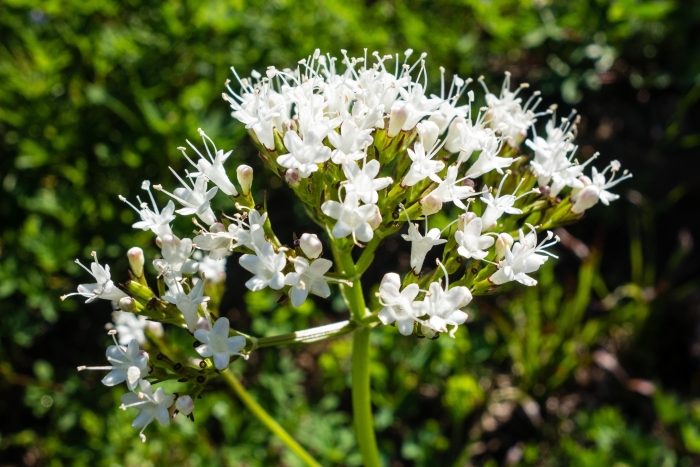Sitka Valerian
(Valeriana sitchensis)
Sitka Valerian (Valeriana sitchensis)
/
/

© Dan Harville
CC BY-SA 4.0
Image By:
© Dan Harville
Recorded By:
Copyright:
CC BY-SA 4.0
Copyright Notice:
Photo by: © Dan Harville | License Type: CC BY-SA 4.0 | License URL: http://creativecommons.org/licenses/by-sa/4.0/ | Uploader: danharville | Publisher: iNaturalist |














Estimated Native Range
Summary
Valeriana sitchensis, commonly known as Sitka valerian, is a rhizomatous perennial herb native to the moist alpine and subalpine meadows, as well as the open coniferous forests of northwestern North America. This includes regions such as Alaska, northern Canada, Montana, and northern California. Sitka valerian typically grows up to 28 inches tall and features stout, erect stems. The leaves are pinnately divided and can vary greatly in size and shape along the stem. From late spring to early summer, it produces an inflorescence consisting of a cyme of small, fragrant white or pink-tinged flowers that are attractive to pollinators.
In cultivation, Sitka valerian is appreciated for its naturalistic appearance and ability to attract beneficial insects. It is used in wildflower gardens, native plant landscapes, and as a border plant in cooler climates. It prefers moist, well-drained soils and can tolerate a range of light conditions from full sun to partial shade. While it is not commonly used for culinary purposes due to the unpleasant scent of its roots, it has historical medicinal uses by Native Americans who cooked and ate the roots and made poultices for various treatments. Sitka valerian can spread by rhizomes, forming colonies, which should be considered when planting to avoid unwanted spread.CC BY-SA 4.0
In cultivation, Sitka valerian is appreciated for its naturalistic appearance and ability to attract beneficial insects. It is used in wildflower gardens, native plant landscapes, and as a border plant in cooler climates. It prefers moist, well-drained soils and can tolerate a range of light conditions from full sun to partial shade. While it is not commonly used for culinary purposes due to the unpleasant scent of its roots, it has historical medicinal uses by Native Americans who cooked and ate the roots and made poultices for various treatments. Sitka valerian can spread by rhizomes, forming colonies, which should be considered when planting to avoid unwanted spread.CC BY-SA 4.0
Plant Description
- Plant Type: Herb
- Height: 1-2.5 feet
- Width: 0.5-1 feet
- Growth Rate: Moderate
- Flower Color: Pink, White
- Flowering Season: Spring, Summer
- Leaf Retention: Deciduous
Growth Requirements
- Sun: Part Shade
- Water: Medium
- Drainage: Medium
Common Uses
Butterfly Garden, Low Maintenance, Water Garden
Natural Habitat
Moist alpine and subalpine meadows, and open coniferous forests of northwestern North America
Other Names
Common Names: Sitka Valerian, Marsh Valerian, Swamp Valerian
Scientific Names: , Valeriana sitchensis, Valeriana anomala, Valeriana frigidorum, Valeriana hookeri var. beta, Valeriana micrantha, Valeriana sitchensis subsp. sitchensis, Valeriana sitchensis var. sitchensis, Valeriana suksdorfii,
GBIF Accepted Name: